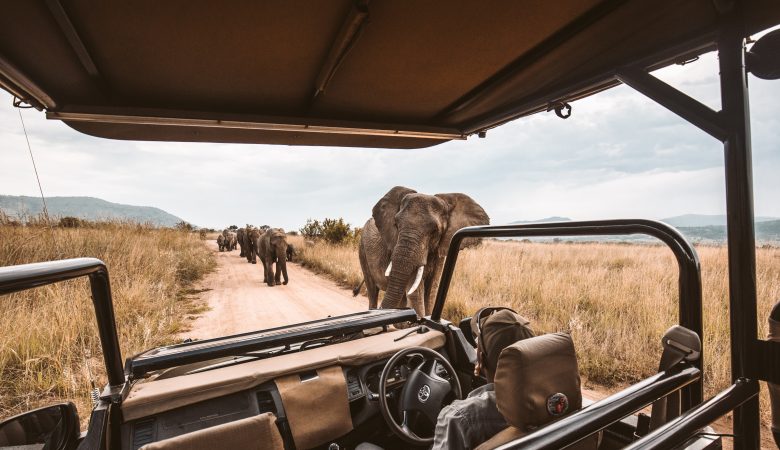Have you ever wondered what it feels like to soar through the air at 120 miles per hour? Well, wonder no more! Skydiving is a thrilling and exhilarating experience that offers a unique perspective of the world around us. From the moment you jump out of a plane to the moment your parachute opens, you’re in for an adrenaline-pumping adventure. In this blog post, we’ll explore everything there is to know about skydiving – from its different types and equipment to its potential dangers. So buckle up (or rather, strap on) and get ready for some free-falling fun over Dubai!
What is skydiving?
Skydiving is an extreme sport that involves jumping out of a plane at high altitude and free-falling through the air before deploying a parachute to slow down your descent. Skydivers experience an intense rush of adrenaline as they plummet towards the earth, enjoying stunning views from above.
There are two main types of skydiving: tandem and solo. Tandem skydiving involves jumping with a trained instructor who is responsible for controlling the parachute and ensuring your safety. Solo skydiving, on the other hand, requires extensive training and certification before you’re allowed to jump alone.
No matter which type of skydiving you choose, it’s important to understand that it comes with risks. While modern equipment has made the sport much safer than in years past, there’s always potential for something to go wrong.
Despite its inherent dangers, skydiving remains one of the most thrilling experiences someone can have in their lifetime. The feeling of flying through the air like a bird is truly unmatched by anything else – making it well worth considering if you’re looking for adventure!
The different types of skydiving
Skydiving is an amazing activity that involves jumping out of an airplane or helicopter at a high altitude and free-falling through the air before deploying a parachute to slow down your descent. There are different types of skydiving, each with its unique features and requirements.
Tandem skydiving is one of the most popular types where you jump in tandem with a certified instructor who controls the landing. It’s perfect for beginners who want to experience the thrill without training extensively.
Accelerated Freefall (AFF) allows you to learn how to skydive solo under close supervision. You’ll undergo thorough ground training before making your first jump.
Static Line Skydiving involves jumping solo from lower altitudes while being attached via a static line that deploys your parachute automatically once you leave the aircraft.
Wingsuit flying allows you to fly horizontally through the air wearing a specially designed wingsuit which increases surface area and lift giving you more time in free fall.
All these types of skydiving have their own unique experiences. However they require proper training and equipment for safety purposes.
What is the record for the highest skydive?
When it comes to skydiving, there are many incredible feats that have been accomplished over the years. One of the most impressive is undoubtedly the record for the highest skydive ever performed.
The current record was set back in 2012 by Austrian daredevil Felix Baumgartner. After ascending to an altitude of 128,100 feet in a specially designed balloon capsule, Baumgartner leaped from his platform and free-fell for just over four minutes before safely deploying his parachute and landing back on solid ground.
This jump shattered previous records and pushed the limits of what many believed was possible in terms of human endurance at high altitudes. It’s worth noting that this wasn’t just a thrill-seeking stunt; it was part of a larger scientific project aimed at gathering data about extreme environments and how they impact our bodies.
While few people will ever attempt anything like Baumgartner’s historic dive, it stands as a testament to what humans can achieve when we combine cutting-edge technology with grit and determination. Whether you’re a seasoned skydiver or simply fascinated by extreme sports, there’s no denying that moments like this inspire us all to reach higher (quite literally!) than we ever thought possible.
How to skydive
Before you can jump from a plane, you need to know how to skydive. The process begins with finding a reputable skydiving school that provides thorough training. This includes classroom instruction on the basics of freefall body positioning and canopy control.
Once your ground training is complete, it’s time for your first tandem jump. This involves being attached to an experienced skydiver who will guide you through the entire experience. During this initial jump, you’ll learn how to exit the plane and maintain stable body position during freefall.
After completing several successful tandem jumps, you may be ready for solo jumps with your own parachute. You’ll continue to receive guidance from instructors as needed while gradually increasing the difficulty of each dive.
It’s important to always follow proper safety procedures when skydiving, including checking equipment before every jump and staying aware of any changes in weather conditions that could affect your descent. With patience and practice, anyone can learn how to safely enjoy this thrilling sport!
The different types of skydiving equipment
Skydiving is an exciting and thrilling experience that requires the right equipment to ensure a safe landing. There are different types of skydiving equipment, each with its unique features designed to enhance safety and comfort.
The most important piece of equipment for any skydiver is the parachute system. This includes the main canopy, reserve parachute, and pilot chute. The main canopy usually measures between 300-400 square feet and is made of lightweight nylon material that’s strong enough to hold up in high winds.
The reserve parachute acts as a backup plan in case something goes wrong with the main canopy during free fall or landing. It’s essential to have this secondary option always ready just in case something unexpected happens.
Another critical piece of skydiving gear is the harness which attaches you securely to your parachute system. A good harness should fit snugly but comfortably around your body without restricting movement or breathing.
In addition to these essential pieces of equipment, there are also other optional items such as altimeters, goggles, helmets, and jumpsuits designed specifically for skydivers. Altimeters help monitor altitude during freefall while goggles protect your eyes from wind resistance at high speeds.
Choosing appropriate skydiving gear can make all the difference between a successful jump and disaster. As such it’s vital that every jumper invests money on quality equipment designed specifically for this extreme sport!
What are the dangers of skydiving?
Skydiving is a thrilling experience that gives you an adrenaline rush like no other. It’s an activity that allows you to conquer your fears and push your limits. However, as with any extreme sport, there are dangers associated with skydiving.
The most common risks of skydiving include equipment failure, parachute malfunction, collisions in mid-air or during landing, and weather conditions such as high winds or storms. These risks can be mitigated through proper training and safety procedures.
It’s important to note that the majority of accidents related to skydiving occur due to human error rather than faulty equipment or poor weather conditions. This highlights the importance of following all safety guidelines and receiving adequate training before attempting a skydive.
While there are inherent risks associated with skydiving, these can be minimized by taking appropriate precautions and engaging in responsible behavior. With proper preparation and guidance from experienced instructors, anyone can enjoy the thrill of free-falling over Dubai at 120 miles per hour safely!








